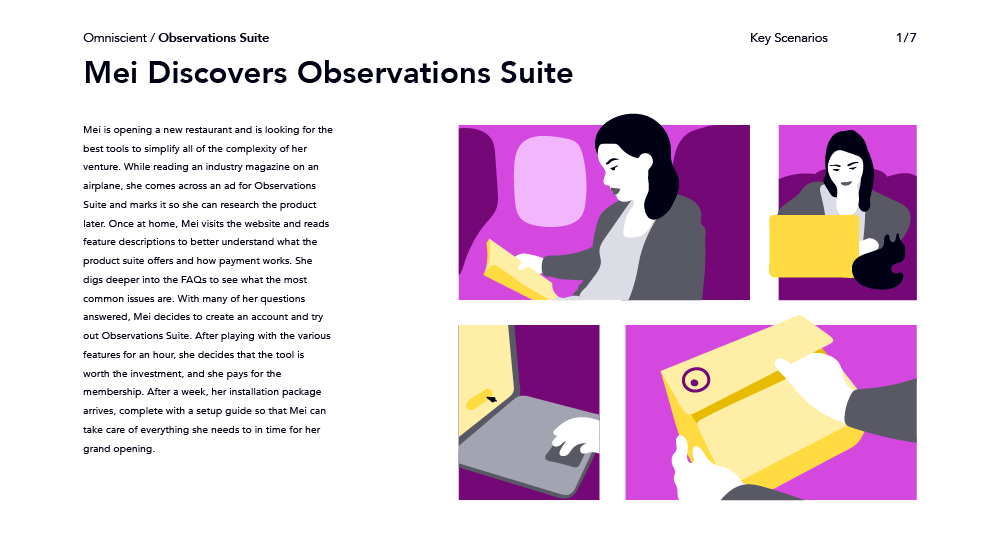Define 17
Key Scenarios
Products and services often start with lists of features. While effective for aligning teams and measuring progress, feature-only approaches can lead to experiences that treat all features as equal, giving the unlikely worst-case scenario and the joyful moments of everyday use the same amount of attention and care. Design teams can help prevent this misstep by choreographing features into key scenarios that represent the most common or important paths the user takes through the experience.
Most traditional projects will use either key scenarios or an experience journey to highlight how users will move through an experience. Depending on the phase of the project, key scenarios can provide focus at the start, structure through execution, or a framework for testing once the product or service is built. Key scenarios are also useful for highlighting how a user will interact with new features or offerings when iterating on an experience.
Buy from Amazon Buy ElsewhereCityBike
Connected Bicycle
Key scenarios for CityBike follow three personas through their experiences with the product. Backgrounds change to capture when things are going as expected and when things go wrong.
Omniscient
Observations Suite
Observations Suite’s key scenarios show the needs and challenges of five personas as they discover and use the product. In each scenario, engagements with various touchpoints are highlighted with yellow.
Related Chapters
13
Feature Definition
How do we keep features user-centric? How do we capture all aspects of a feature so that they don't get lost?
19
Participatory Design
How can we ensure that we have many perspectives represented in the design process? When should we bring in users to enrich our process?
25
Mock-Ups
How does our product or service look, feel, and sound? How do we communicate this simply to stakeholders?
31
Prototype
What type of prototype should we build? How do we get realistic feedback from users?

